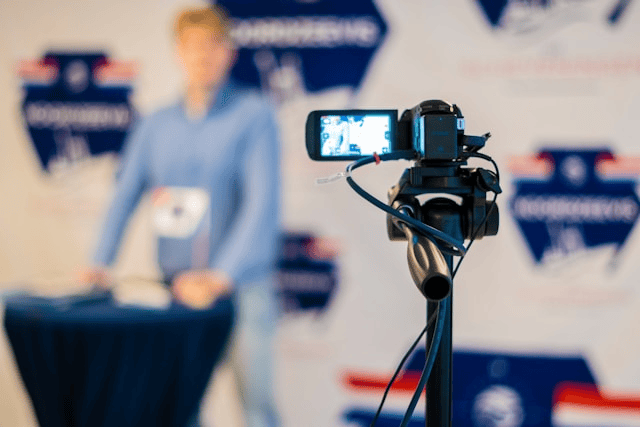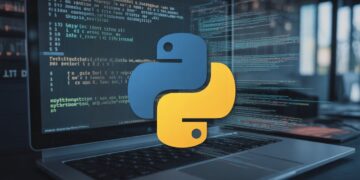In today’s digital-first world, hosting virtual events and webinars has become a vital strategy for businesses, educators, marketers, and creators. Whether you’re educating your audience, launching a product, or building your brand, a well-executed online event can significantly boost engagement and drive results without the cost and logistical stress of in-person events.
In this article, you’ll learn how to host a webinar or virtual event successfully, from planning and promotion to execution and follow-up. Whether you’re a first-timer or looking to refine your approach, this step-by-step guide will help you get it right.
Define Your Goals and Audience
Before diving into logistics, start by answering two critical questions:
What is the goal of your event?
Who is your target audience?
Your objectives might include lead generation, customer education, brand awareness, or launching a product. Clear goals will shape your messaging, content, and success metrics. Simultaneously, defining your audience helps you tailor your content, platform, and promotion strategy.
For example, if you’re targeting tech-savvy professionals, you might use advanced features like breakout rooms or whiteboarding. On the other hand, a broad consumer audience may respond better to a simplified format and accessible content.
Choose the Right Platform
Your choice of platform plays a major role in the overall experience for both you and your attendees. Several popular webinar platforms are available, each offering different features and price points.
Top Virtual Event Platforms:
-
Zoom – Great for simplicity and breakout sessions.
-
Webex – Offers robust enterprise-level features.
-
Microsoft Teams – Excellent for corporate environments.
-
GoToWebinar – Designed specifically for webinars with strong analytics.
-
Hopin – A full-scale virtual event platform with expo-style features.
When choosing a platform, consider:
-
Event size and expected attendance
-
Required features (e.g. live chat, Q&A, screen sharing, polling)
-
Technical support and ease of use
-
Budget and integration with your CRM or marketing tools
Picking the right tool is one of the most important virtual event best practices.
Plan Your Content and Format
Great content is the backbone of every successful webinar. Once you’ve defined your audience and goals, choose the right content type and format.
Popular Formats:
-
Single-speaker presentation – Ideal for educational content or thought leadership.
-
Panel discussion – Great for industry insights with multiple voices.
-
Live demos – Useful for product launches or tutorials.
-
Interactive Q&A – Encourages audience engagement.
Use a clear structure with an engaging opening, informative body, and strong call to action. Incorporate visuals like slide decks, screen shares, or pre-recorded videos to keep the content dynamic.
Don’t forget accessibility include captions, ensure your text is readable, and keep jargon minimal when possible.
Promote Your Event
Even the best-planned event will flop without attendees. That’s why online event marketing is critical to your success.
Promotion Strategies:
-
Email Marketing – Send invites to your email list with a strong CTA.
-
Social Media – Create event pages on LinkedIn or Facebook, share teasers, and use countdowns.
-
Partners & Influencers – Collaborate with relevant industry players to extend your reach.
-
Content Marketing – Publish blogs, podcasts, or videos leading up to the event.
Make sure your registration landing page includes:
-
A compelling headline
-
Speaker bios
-
Date/time with time zone conversion
-
Clear description of what attendees will learn
-
A simple registration form
Send reminder emails 1 week, 1 day, and 1 hour before the event to reduce no-shows. Promotion is an essential item in any webinar planning checklist.
Prepare for the Big Day
Preparation can make or break your event. Here’s how to get everything ready:
Technical Setup:
-
Test your internet connection, webcam, and microphone.
-
Run a dress rehearsal with all speakers.
-
Prepare backup slides or recordings in case of glitches.
People Preparation:
-
Assign a moderator to manage Q&A and chat.
-
Brief speakers on timing and format.
-
Prepare talking points and transitions.
Engagement Tools:
-
Use polls to collect insights.
-
Enable Q&A or chat for live interaction.
-
Plan at least one moment for audience participation.
This level of preparation ensures your webinar engagement tips actually translate into results.
Host with Confidence
The day of the event has arrived. Here’s how to execute smoothly:
Best Practices During the Event:
-
Start on time – Respect your attendees’ schedules.
-
Welcome and orient – Briefly introduce the platform tools (mute button, Q&A, etc.).
-
Stick to the script but stay flexible – Handle surprises with professionalism.
-
Engage throughout – Use chat, shout-outs, and polls to keep energy up.
-
Record the session – This extends the value of your event beyond the live experience.
Even if you’re nervous, preparation will help you host with confidence and clarity.
Follow-Up and Analyze Results
Your job isn’t over once the screen goes dark. Post-event follow-up helps maintain momentum and gives you data to improve future events.
Post-Event To-Do List:
-
Send a thank-you email with the event recording and resources.
-
Share the recording on your website, YouTube, or social channels.
-
Send a feedback survey – Keep it short but valuable (e.g. “What did you like? What could be improved?”).
-
Review analytics from your platform:
-
Attendance rate
-
Average watch time
-
Engagement stats (polls, chat, Q&A)
-
Conversion rate to your next CTA (e.g. sign-up, download, buy)
-
Use this data to refine your strategy for your next virtual event or webinar.
Final Thoughts
Learning how to host a virtual event or webinar doesn’t need to be overwhelming. With the right goals, tools, content, and promotion, you can create a seamless experience that drives value for both you and your audience.









